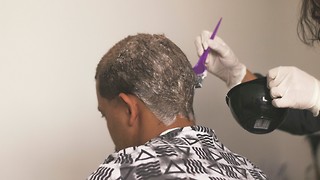Interview: Dr Kristian Franze
Joy Thompson talks to one of Cambridge’s pioneeering biophysics researchers and discovers a wealth of breakthroughs in progress

There is a bulldog skeleton hanging in Kristian Franze’s office at the Department of Physiology, Development and Neuroscience. Its name is Bruno. “The lab loves him,” says Dr. Franze, as Bruno greets us with a toothy grin.
As well as being the beloved lab pet, Bruno is also a demonstration model when he teaches veterinary anatomy at the department. This harks back to Dr. Franze’s first degree in veterinary science, which reflects his long-standing interest in both biology and physics; it was only through flipping a coin that he chose veterinary science over undergraduate physics. After that, though, a research career was more appealing, and instead of continuing in veterinary practice he began a PhD in neuroscience. “Also,” he says, “I realised that pets have owners – and vets have to deal with the owners too!”
Why neuroscience? “The brain is the most complex and least well-understood organ system – my project was about the mechanics of the retina, and nothing was known about this.” In fact, his PhD started to drift from ‘pure’ neuroscience to physics when his supervisor sent him to Texas to learn biophysical techniques, such as atomic force microscopy (now a key technique in his own research group). The drift towards biophysics continued on his return, until he ended up graduating with a PhD in Physics instead “while maintaining the connection with neuroscience.”
After his PhD, Dr. Franze came directly to Cambridge to study as a postdoc in physics. “I moved with a friend who got a lectureship here,” he says, “and he made an offer I couldn’t refuse!” Soon afterwards, he began to drift from physics back to neuroscience. The award of a Humboldt Fellowship, sponsored by Professor Christine Holt in the department of Physiology, Development and Neuroscience, led to affiliations with both Neuroscience and Physics. The drift towards neuroscience culminated in a move to Physiology in 2011, where he started his own research group.
Today, Franze’s lab works on neuromechanics. “We look at how cellular forces and mechanical interactions between cells and their environment impact nervous system development and regeneration,” he explains. He’s enthusiastic about taking a biophysical approach to neuroscience. “Biology often focuses on how molecular signalling controls biological processes, but we can’t get a holistic understanding of how biological systems work by looking at individual proteins only. It’s like taking out all the screws from an aeroplane and examining individual screws to find out how it flies. Cells live in the physical world and obey physical laws, so including physics in biology will close important gaps in our understanding of how life works.”
It’s an exciting time to be applying biophysics to neuroscience; there’s no shortage of open questions to answer, and experiments to design in order to answer them. It’s still not known why nerve cells don’t regenerate after spinal cord injury, for example, and we still don’t completely understand how they develop in the first place. ‘The most exciting experiment I’ve done myself was building an optical trap that let us use light to grab retinal cells, stretch them out, and observe how light travels through them,’ says Dr. Franze. (This work was published in the journal PNAS in 2007.) So is he a neurobiologist, a physicist, or a biophysicist? Dr. Franze shrugs. “I’m a scientist.”
 News / Trinity sells O2 Arena lease for £90m12 August 2025
News / Trinity sells O2 Arena lease for £90m12 August 2025 Features / The community Cambridge accommodation creates (and doesn’t)9 August 2025
Features / The community Cambridge accommodation creates (and doesn’t)9 August 2025 Features / Incoming freshers and their hopes, fears and expectations for Cambridge 12 August 2025
Features / Incoming freshers and their hopes, fears and expectations for Cambridge 12 August 2025 News / Local group objects to ‘bulky’ new Christ’s library13 August 2025
News / Local group objects to ‘bulky’ new Christ’s library13 August 2025 Lifestyle / An ode to college accommodation11 August 2025
Lifestyle / An ode to college accommodation11 August 2025









